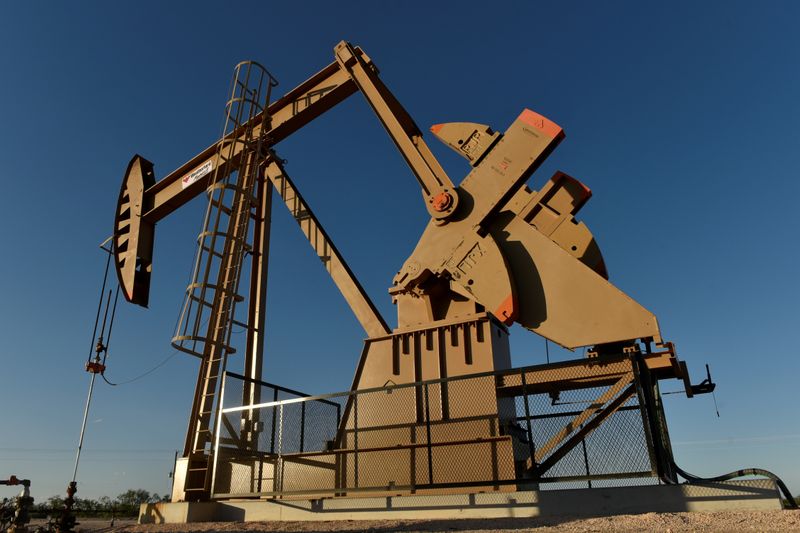LONDON (Reuters) - Oil's price structure for Brent and U.S. crude has caused storage to be drawn down, signalling a recovery in global markets and tighter supplies as major producers cut output to compensate for demand loss due to the coronavirus pandemic.
Brent on Thursday moved into backwardation, where oil for immediate delivery costs more than supply later. The premium at which Brent crude futures for August delivery are trading above September
Short-term Brent swaps in the North Sea market, contracts for differences, have also moved into backwardation, suggesting a stronger physical market.
That has encouraged storage to be drawn down.
"The floating storage, in particular in the (U.S.) Gulf Coast is already decreasing as buyers are opting for taking out the floating tankers rather than engaging into a new booking," said Rystad Energy's senior oil markets analyst Paola Rodriguez Masiu.
She added that the extension of output cuts by OPEC+ helped the market to find its balance after months.
The Organization of the Petroleum Exporting Countries and allies, known as OPEC+, have been cutting output since May by a record 9.7 million barrels per day (bpd), 10% of global supply.
The new oil price structure marks a turnaround from earlier when the coronavirus outbreak had pushed oil prices into the opposite structure, when prompt prices fell below forward prices, known as contango.
On Friday, the six-month contango on Brent futures
The drop in U.S. oil production also helped the recovery of the markets. U.S. crude output fell last week to 10.5 million barrels per day, the lowest since March 2018, the Energy Information Administration said.
The six-month contango for diesel

Graphic: Brent moves into backwardation https://fingfx.thomsonreuters.com/gfx/ce/dgkvlxmbkvb/share-card.png